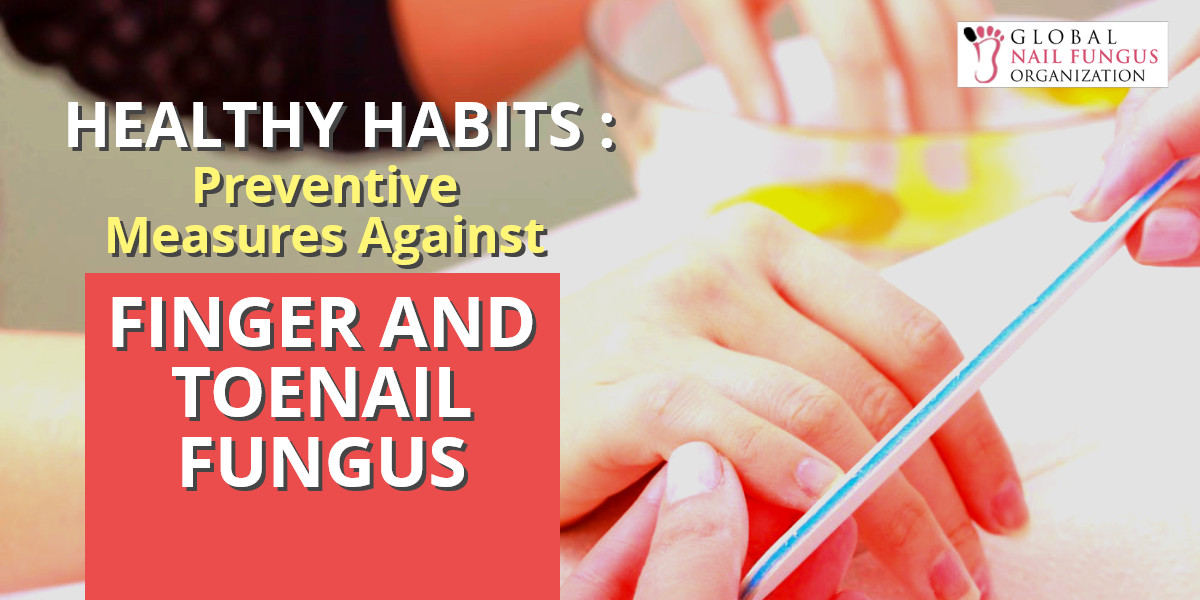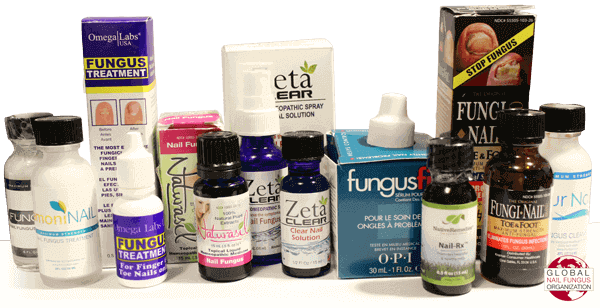 Healthy Habits: Preventive Measures Against Finger and Toenail Fungus
Healthy Habits: Preventive Measures Against Finger and Toenail Fungus
Table of Contents
Factors that Attract Nail Fungus
Unhygienic lifestyle
Fungi are lifeforms, and like all lifeforms, can thrive given the right conditions. Fungal colonies grow best in warm, humid environments, especially away from light. Fungi also require a rich source of food and dead skin cells serves this purpose well. Here are several unhealthy acts that lead to a greater risk of fungal infection.
You’re more likely to get a fungal nail infection if you:
-
don’t keep your feet clean and dry
-
wear shoes that cause your feet to get hot and sweaty for long periods
-
walk around barefoot in places where fungal infections can spread easily, such as communal showers, locker rooms, and gyms
-
have damaged your nails and left them as is
-
share personal items with a person suffering a fungal infection
Toenail infections are much more common than fingernail infections. This is because feet are usually kept in the dark, warm, and moist environment of shoes or boots, while the hands are often exposed to open air.
Skin Infections and Diseases
Athlete’s foot
Experts have found that many people who suffer from nail infections also suffer from athlete’s foot. It is highly possible that athlete’s foot is a precursor to other fungal infections. Athlete’s foot itself can also spread to nails and hair if the infection is not controlled.
Psoriasis
Psoriasis is an autoimmune disease wherein a person’s skin appears blotched, red, or scaly. The true cause of psoriasis is not known; however, it can be triggered by factors such as a weakened immune system. Long-lasting nail fungal infections may be a risk factor as they can put the immune system under immense stress.
Poor peripheral circulation
Infected nails sometimes die completely. This causes the body to respond by deciding not to supply the dead cells in the region with nutrition. Blood vessels send less blood to the affected extremities as a result. In the worst of cases, this may lead to necrosis.
Weak immune system
Under normal circumstances, the body is able to fend off against fungal infection. However, when the immune system is compromised, it becomes easier for fungal colonies to establish a foothold. This can be a serious problem, as a fungal infection can further hamper the body’s ability to defend itself, leaving the body more vulnerable to disease.
Diabetes
According to www.berkelywellness.com, about one-third of people with diabetes have toenail fungus. It is possible that reduced blood circulation prevents enough antibodies from reaching the extremities to fight off the infection.
Immunosuppressants
These are usually taken to prevent the body from rejecting a transplanted organ. They may also be used to treat hyperactive immune systems. A side effect of taking these drugs is the increased vulnerability to infection, including dermatophytes and other fungi.
It should be noted that elderly members of the population are more likely to suffer from nail fungus as a result of these risk factors.
Direct exposure to fungi
Fungal spores are ubiquitous, but are only able to mature into a full organism when the right conditions are met. The risk of developing an infection greatly increases when directly exposed to a fungi, as the presence of the organism indicates that the environment is right for supporting its growth. Warm and humid environments such as rivers, tropical regions, or even shower rooms provide excellent conditions for pathogenic fungi to grow.
Ways to Avoid Fingernail and Toenail Fungus
It is easier to prevent nail fungal infections than to treat it. Avoiding nail fungus infection is as simple as preventing your hands and feet from becoming accommodating to fungal life. By starving the organism of the necessities it needs to survive, you can stop an infection even before it begins.
-
Keep your hands and feet clean.
Most soaps contain substances toxic to fungal life forms. Use these products to ensure you do not acquire an infection from public bathrooms or lavatories. Be sure to dry your hands and feet after cleaning them. Trim your nails, and exfoliate your hands and feet if necessary in order to prevent accumulation of dead cells which serve as additional food source for pathogenic fungi.
-
Use open footwear when possible.
Sandals and flip-flops are good choices of footwear when trying to avoid fungal infection. The light and open air creates a hostile environment for fungal spores, preventing them from growing.
-
Wear socks when wearing shoes.
Socks not only serve to make shoes more comfortable, but they also keep feet dry. Clean socks absorb moisture, including sweat. Fungi are unable to propagate under these conditions.
-
Do not share nail files, trimmers, or other similar items.
Even if the owner of the item does not have a fungal infection, the risk of microscopic spores landing on these tools and beginning their life cycle is a very real possibility. Avoid sharing personal items such as these. Also be sure to sterilize your own nail files and nail cutters when possible.
-
Keep your surroundings clean.
This is especially true for pool areas, bathrooms, and kitchens. Fungi are most likely to grow in these areas, so disinfect regularly.
What to do When Infected With Nail Fungus
This section describes the different treatment options available, ranging from home remedies to medication and surgical procedures:
Home remedies are the easiest to make but not always the best method of treating nail fungi, as it is difficult to determine what the cause of the infection is without consulting a doctor. Treatments that work against certain species might not be so effective against others. However, as a first response to a fungal infection, it may help to attempt to treat the problem with relatively safe compounds before moving to other options.
-
Vinegar: Fungi require a certain level of acidity to survive. The acetic acid content of vinegar is far too strong however, and it breaks down the structure of fungal colonies. Apple cider vinegar is the most popular choice for fungal treatment, followed closely by white vinegar.
-
Tea Tree Oil: Many plant oils contain chains of fatty acids that break down the cell wall of fungi. Tea tree oil is no exception. It possesses antiseptic properties and is a common ingredient in skin and hair products.
-
Baking Soda and Borax Powder: This is another treatment that takes advantage of the fact that fungi need an acidic environment to survive. Baking soda is alkaline, and combined with borax powder, this creates an environment unsuitable for fungal growth.
-
Coconut Oil: Lauric acid found in coconut oil penetrates dermatophyte cell walls, breaking down their structure. Coconut oil is also a powerful cleaning agent, capable of dissolving microscopic dirt and grime, making the nails easier to clean.
-
Cleaning Agents and Disinfectants: Cleaning agents and disinfectants may be used to kill fungal colonies on the nails by diluting the products in water and soaking the affected area for ten to fifteen minutes per day. Note that this is the riskiest of home remedies and should not be attempted if a fungal infection has gotten to the point where cracks or lesions in the skin are present.
If home remedies do not appear effective, over-the-counter products are the next choice of action in dealing with nail fungi. The advantage of non-prescription products is that they are generally more affordable than prescription medications. They also have fewer side effects and pose little to no health risks . At the same time, they are still formulated with compounds designed to target and destroy fungal infections.
-
Undecylenic Acid: This is a fatty acid included in many topical anti-fungal products. It works by preventing the growth of fungi in the applied area. It is one of the safest topical treatments, with little to no risk of overdose.
-
Econazole: This is an exclusively topical compound used to treat athlete’s foot as well as other skin conditions caused by dermatophytes.
-
Ketoconazole: This is available in both oral and topical forms. It does not require a prescription, but users should be cautioned not to use it with other drugs when treating fungal infections on the skin or nails out of risk of adverse reactions.
-
Salicylic Acid: This is an organic acid with anti-fungal and antibacterial properties. It is also an anti-inflammatory drug that reduces the effects of metabolic byproducts on the skin.
-
Fluconazole: This drug is administered either orally or intravenously. It is included on the World Health Organization’s List of Essential Medicines.
Prescription medications are generally more potent than non-prescription treatment options, but come with the risk of side effects, overdose effects, and contraindications. They come usually in the form of oral medication and may not be applicable for everyone. Turn to prescription drugs only if previous methods prove ineffective and if cleared by a physician.
-
Terbinafine: This is administered either orally or topically and is designed almost specifically to target dermatophytes.
-
Itraconazole: This prescription drug has a broader range of anti-fungal effects than fluconazole. However, the body does not tolerate it as well as its generic alternative.
-
Ciclopirox: Ciclopirox is a synthetic drug that halts fungal growth by interrupting the function of enzymes in the organism’s membrane transfer system. This is available as a nail lacquer or cream
-
Griseofulvin: This is an anti-fungal compound that results from the fermentation of the mold Penicillium patulum. It works by preventing cell division in the fungal cell. It is on the World Health Organization’s List of Essential Medicines. However, it is very intensive on the liver and may not be used on pregnant women or for people with liver problems.
Surgical procedures involve removing either part or all of the nail. These operations are expensive, but result in almost total eradication of the fungus by directly removing the colony. However, it also comes with its own set of drawbacks. The patient may experience discomfort for a few days after the nail is removed until it grows back completely. This is because of the sensitivity of the nail bed. Surgery also must be supplemented by anti-fungal medication, to ensure that no spores remain. Thankfully, surgery is rarely necessary as other treatment methods usually suffice. Surgical procedures are reserved for extreme cases of fungal infection where the fungi threaten to lead to further complications.
Conclusion: Preventing Finger and Toenail Fungus
Fungal nail infections have a reputation for being difficult to treat, but it is not impossible to do so. Proper, informed decisions are all that is necessary to find the right treatment for any existing fungal problem. However, prevention is still better than cure. It is easier to take the precautions outlined above in order to avoid getting a nail infection rather than to spend on one of the listed treatments over the course of several weeks of discomfort. At the end of the day, a healthy lifestyle will always be the best defense against fungal nail infections. The only requirement to maintain such a lifestyle is diligence. Visit Global Nail Fungus Organization for a definitive list of treatments and preventive countermeasures against fungal nail infections.






